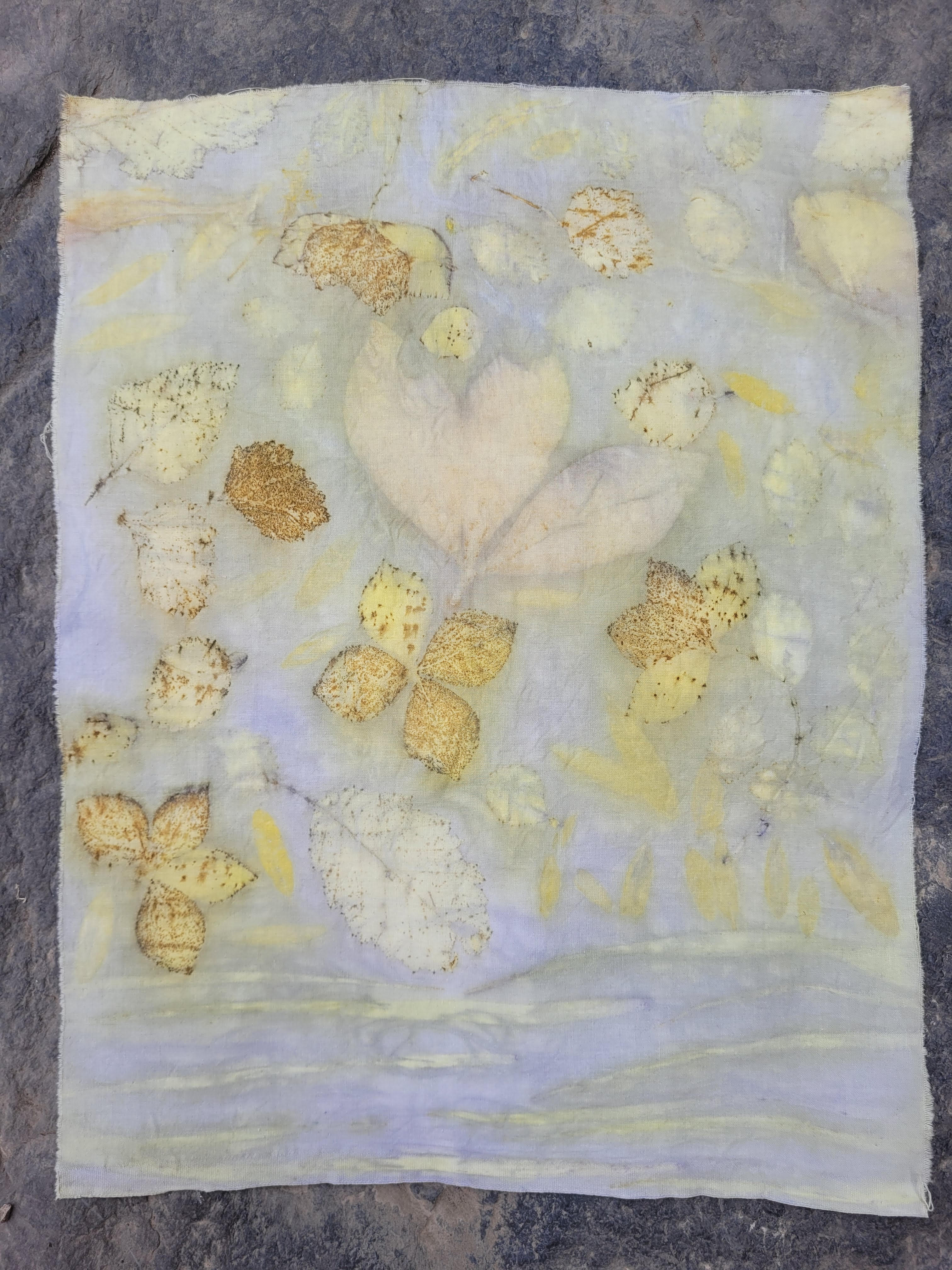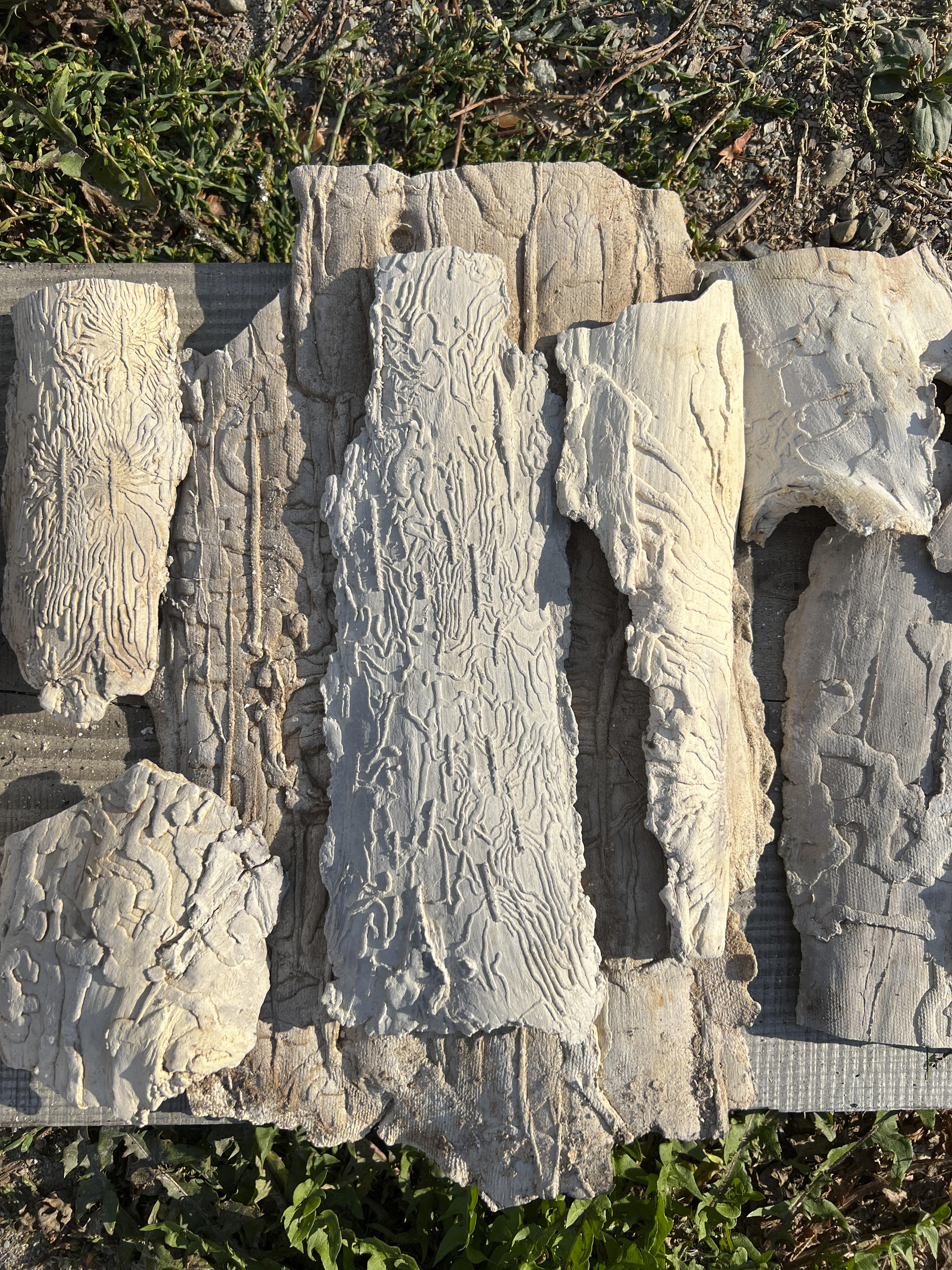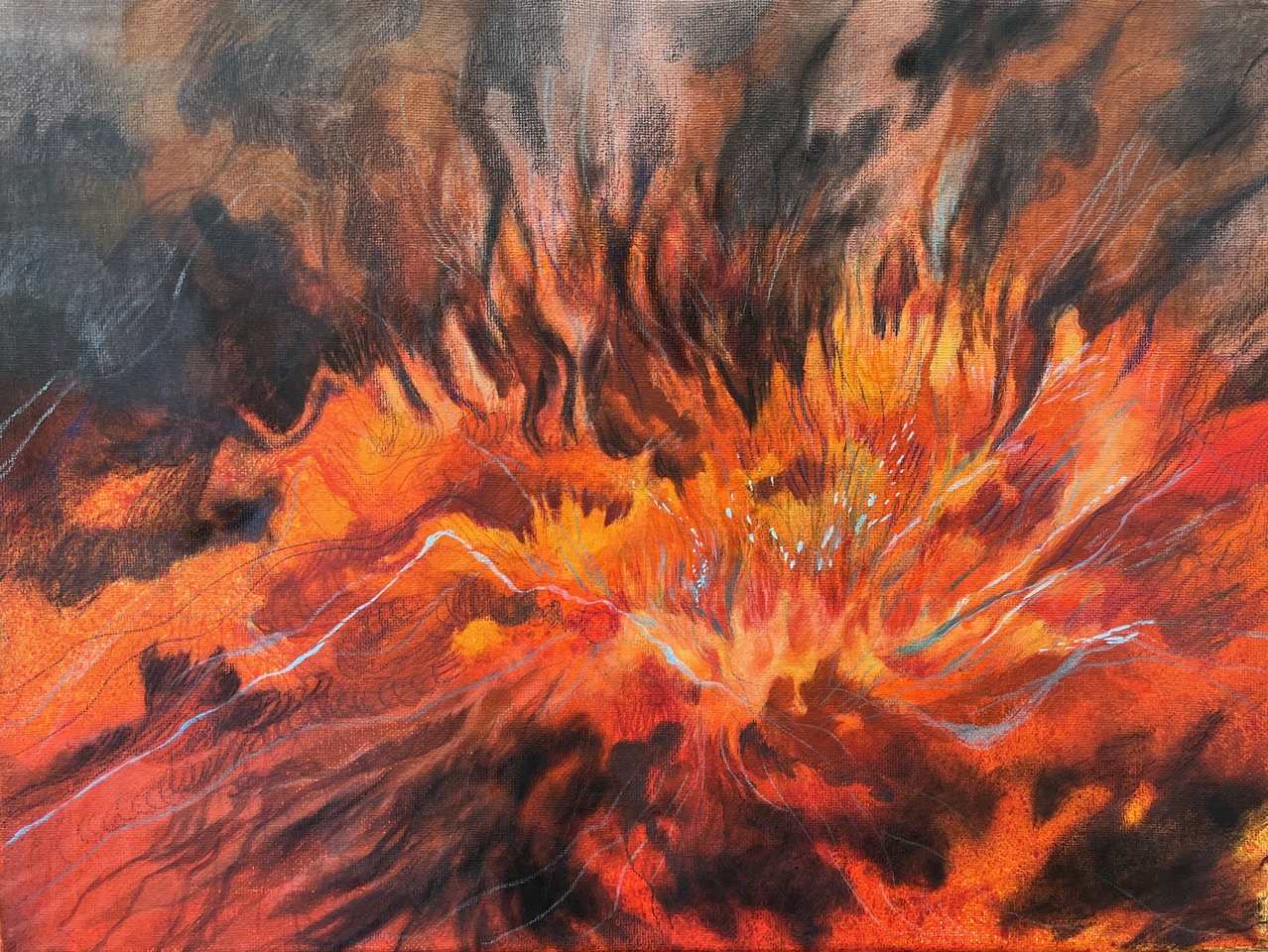The boreal forest is young as far as forests go – thriving on dynamic cycles of natural disturbances and regrowth. However, new drivers like climate change and resource extraction have disrupted these processes, changing how the ecosystem behaves. Using art to explore these disturbances, Forests in Flux is an invitation to engage with pressing environmental issues for Albertans.
This exhibition features three artists who work regularly with boreal themes. Using a variety of mediums including photography, sculpture, painting, and fiber art, the exhibit provides pieces that generate reflection on themes relating to climate change and human-environment interactions.
Yekta Tarki focuses on the relationship between humans and fire and the increase of wildfires in the natural ecosystem. The increase in the amount of fire in the Earth’s ecosystem and its consequences, such as deforestation resulting from climate change, is obvious. She delves into the phenomenon of wildfires and represents her perception in abstract pieces of paintings. She channels her passion for exploring the human-nature relationship through environmental issues into a research-based practice that contributes to ecological consciousness.
Yekta Tarki is an Iranian artist based in Calgary, Alberta. She is pursuing a Master of Fine Arts at the University of Calgary, having previously earned both a Master of Fine Arts and a Bachelor of Fine Arts in painting from the Tehran University of Arts. Through her research creations, she explores the relationship between humans and nature amidst environmental crises, employing art in conjunction with other sciences. She gathers scientific reports and data related to environmental issues, translating them into her visual language.
Tanya Yeomans (she/her) is a geospatial scientist whose current research is centered around using satellite data to assess boreal forest recovery from industrial disturbances. Alongside her scientific practice, she uses textiles and digital media to co-create rich and complicated understandings of technology, people, and the environment. Her focus is largely geographic, employing geospatial software, data, and technology alongside place-based arts practices such as site-specific installations, on-site art creation, foraged dye materials, and found objects in her work.
Julya Hajnoczky’s work is a critical examination of human impacts on the natural world and how ecosystems are changing in our current era. Adopting and adapting the practices of scientific investigators, her multidisciplinary practice involves collecting materials following ethical foraging practices (plants, bones, or lichen specimens, for example) from natural environments, for use as raw material in making work, and as reference material. She investigates ecosystems and the connections within them, particularly via site visits and consultation with scientists and other experts and she is continually seeking out new ways of exploring themes of biodiversity loss and climate change, to translate expert knowledge into accessible, intriguing, relevant, and impactful artwork.

Leaf Print by Tanya Yeomans

Beetle Gallery by Julya Hajnoczky
Visualizing the Pyrocene by Yekta Tarki
Click here to the Crescent Heights Community News home page for the latest Crescent Heights community updates.











